
Issue 067
November 2010
The clash of styles is back. So which martial art wins?
A new era is dawning in MMA. Until recently, describing a modern mixed martial artist as ‘well-rounded’ was praise indeed. ‘Well-rounded’ signified that a fighter had no clear weakness for opponents to exploit. But it’s no longer enough. At the elite level of modern MMA, it’s rare for any fighter to have a hole in their game. Being ‘well-rounded’ is a prerequisite, not an advantage.
Achieving a place among the upper echelons of MMA in 2010 is about excelling in your dominant discipline. Every fighter has their nucleus. For Brock Lesnar it’s wrestling; Lyoto Machida, karate; and ‘Shogun’ Rua, Muay Thai. What makes these fighters unique is implementing their chosen discipline to a level never seen before in MMA. This is the age of the boundary-pushing expert – the virtuoso.
But the question remains, as it has since the Ultimate Fighting Championship’s founding: which style is the greatest? Fighters Only touched gloves with some of MMA’s most respected virtuosos, and found out...
Those ratings explained
We evaluated the fighting styles under the following criteria:
- Success - Does the style chalk up ‘W’s faster than a kindergarten alphabet class?
- Influence - How much does the martial art dominate the sport as a whole?
- Entertainment value - Because wins alone don’t guarantee a title shot.
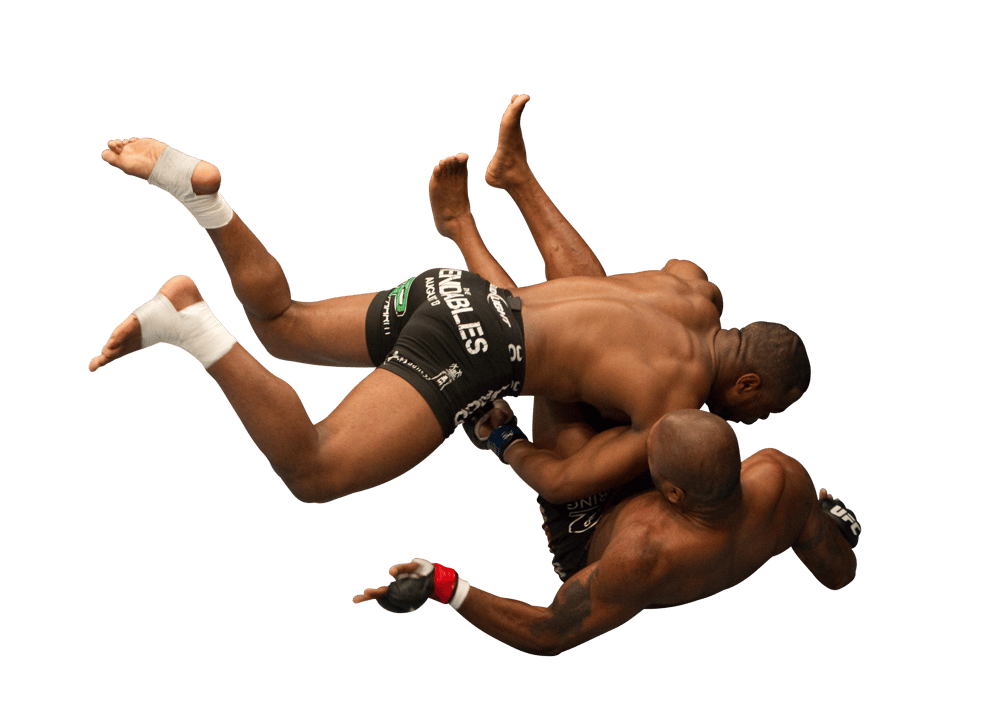
Wrestling
In recent months wrestlers have pushed the boundaries of their discipline to the limit. Brock Lesnar doesn’t just control his opponents, he crushes them. Rashad Evans blends wrestling and smooth striking. Fitch and Maynard represent the next generation of ground ‘n’ pound.
Wrestlers possess one clear advantage, as illustrated by four-time NCAA Division 1 All-American Josh Koscheck. “It’s having the ability to choose where you want the fight to take place. If you want it standing, you keep it standing. If you want it on the ground, you take them down.”
Wrestlers take the fight to where victory’s a foregone conclusion. How? Experience. Ryan Bader, a three-time PAC 10 champion, testifies: “There’s nothing like having 15-plus years of wrestling wisdom, throwing around bodies, knowing how to use yours, and how your opponent’s body will react.”
Greco-Roman wrestling, taught in US schools and colleges, isn’t the most technical form of grappling. But it’s extremely effective in practice, especially when re-enforced by athleticism, power and conditioning. Ryan Bader says: “Think of the time we put in becoming high-level wrestlers. We’re national champions, and that takes discipline. We bring a mental toughness in the gym, we know how to train hard, and that carries into MMA.”
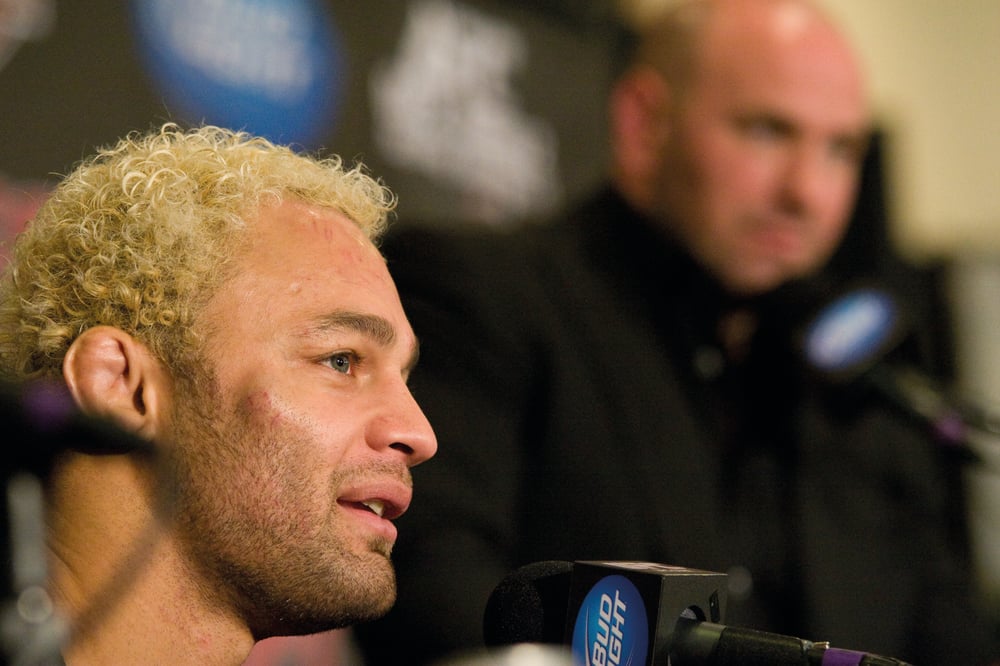
A wrestling background also prepares a fighter for one of the most crucial elements of MMA: controlling your opponent. In the clinch or on the ground, wrestlers display a potent blend of comfort and confidence.
Wrestling has its critics. They say wrestlers have a ‘winning is everything’ mentality, and it’s led to an unhealthy trend – ‘lay ‘n’ pray’ tactics. For the uninitiated that’s the practice of taking your opponent to the ground, acting enough to prevent being stood up by the referee, but not risking position by attempting to finish the fight.
As someone who’s been accused of employing lay ‘n’ pray in the past, three-time All American Gray Maynard doesn’t believe criticisms have merit. “It’s not fair at all. When you have two top guys, it’s hard to control him. The minute you posture up to punch, you give him space to get out. MMA is about winning. I owe it to me to get the win. There are people who complain about everything, it’s their nature to sit on the couch saying, ‘This guys sucks.’ But they’ve never done anything with their life.”
Although Gray Maynard defends the lay ‘n’ pray strategy convincingly, there is no denying that wrestling can be dull to watch. Nick Lentz’s ‘wall ‘n’ stall’ victory over Andre Winner at UFC 118 led to thousands of viewers switching off their TV sets during Spike TV’s free prelim broadcast. It’s notable that wrestlers under scrutiny are upping their intensity, and John Fitch’s domination of Thiago Alves at UFC 117, and Maynard’s own win over Kenny Florian, again at UFC 118, both had their share of thrills.
While wrestling’s achieved great success in MMA and becomes ever more influential, it’s clearly capable of appearing mundane and monotonous. But the world of MMA is always evolving, and we eagerly await (in a low stance) wrestlers finding ways to fill halls and finish fights.
Success - 10
Influence - 8
Entertainment value - 3
Virtuosos: Brock Lesnar, Rashad Evans, Georges St Pierre, Josh Koscheck, Jon Fitch, Gray Maynard
Brazilian jiu-jitsu
The Gracie family founded the Ultimate Fighting Championship as a showcase for their BJJ fighting style. Over a decade later the style’s still providing spectacular finishes and unlikely combat-sports champions.
Demian Maia, one of BJJ’s boundary-pushers, says, “It’s the most important art in MMA. You can do well if you don’t know boxing or wrestling or Muay Thai, but if you don’t know BJJ it’s impossible to fight against an MMA champion. Look at Brock Lesnar, all his coaches are BJJ black belts.”
Maia explains what makes BJJ so essential: “BJJ is made for MMA, for vale tudo [the precursor of MMA]. Other martial arts train for competitions with certain kinds of rules, but BJJ is for MMA. When I was training from a young age, I knew I would one day use the techniques in MMA.”
This is a major reason behind the success of BJJ: it’s been evolved specifically for mixed martial arts contests but boxing, judo, and pretty much everything else too, haven’t.
The head grappling coach at American Kickboxing Academy (AKA), Dave Camarillo, explains why BJJ’s so vital. “BJJ has two main strengths. First, the ability to flow. It creates a very relaxed body. The second is the ability to conserve energy. Take Jake Shields [a wrestler, but also BJJ black belt], who’s trained so much at AKA. He gets on top, and uses 20–30% of his energy while you use 60–70% to get away from his punches. He has an ability to suffocate you.”

With a 2010 persepctive BJJ’s greatest advantage seems to be its ability to constantly evolve. This year alone BJJ virtuosos have found even more ways to frustrate opponents. ‘Chain’ submissions, where two holds are applied simultaneously, are an eyebrow-raising trend: see Fabricio Werdum’s Internet-crashing win over Fedor Emelianenko and Chris Lytle’s victory over Matt Brown. Werdum and Ronaldo ‘Jacare’ Souza are noted for their grappling ‘feint’ game, deceiving already nervous opponents into nasty holds. Demian Maia’s noted for his use of submissions from surprising angles (for example his triangle administered from the top against Chael Sonnen at UFC 95). Perhaps most significantly, Maia in full flow is a thrill to witness, every bit as watchable as a courageous striker.
Of Jake Shields’ ‘American jiu-jitsu’ as he calls it, Dave Camarillo says, “He has such an ability to lie on top of you and suffocate you. He makes his opponents paranoid to get finished, and they end up taking damage by trying to avoid his submission attempts. He’s very good at flowing into positions and setting up submissions that his opponents have to waste energy defending. A good example of that was his fight against Dan Henderson. If the submission isn’t there, he improves his position or uses strikes to cause damage, and that can often set up another submission attempt for him.”
Then there’s Eddie Bravo. While BJJ purists sometimes despair over the 10th Planet coach’s democratization of their art, it’s him who’s leading the next generation of jiu-jitsu. Bravo has made a complex martial art accessible with his memorable phonetic names for less easily remembered techniques. Not to mention his tuition of the meteoric George Sotiropoulos. BJJ might be a little high-minded but it’s certainly not apathetic, and can still make a claim to be the most vital component within mixed martial arts.
Success - 8
Influence - 10
Entertainment value - 6
Virtuosos: Demian Maia, Fabricio Werdum, ‘Minotauro’ Noguiera, ‘Jacare’ Souza
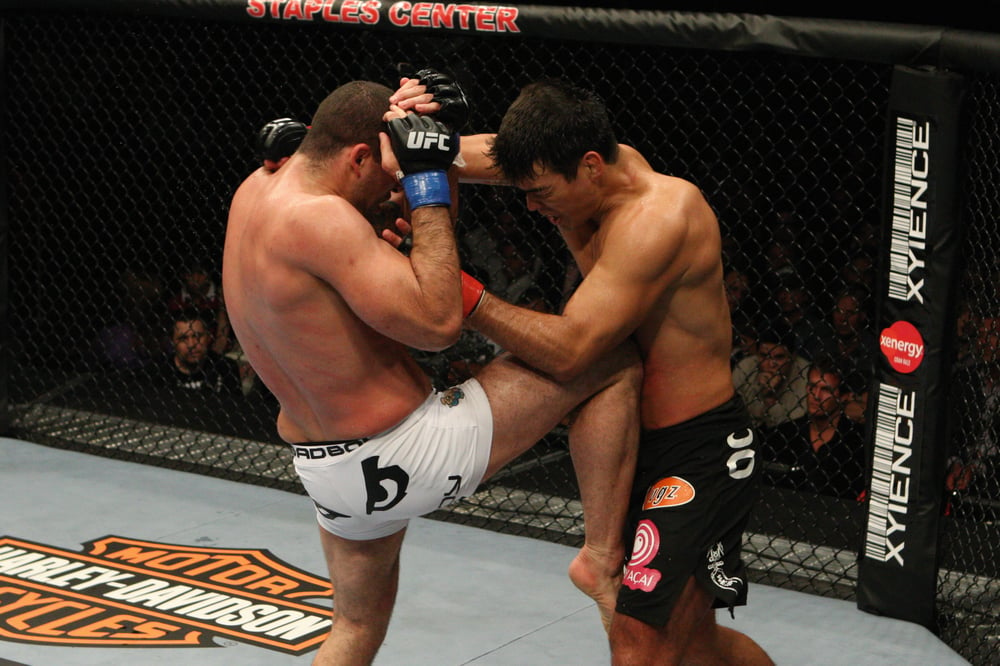
Muay Thai
Within MMA, the three conventional striking disciplines are boxing, kickboxing and Muay Thai. Even the most adept sprawl ‘n’ brawl fighters, named after their ability to ‘stuff’ takedowns and keep on banging, have struggled against the latest wave of elite wrestlers.
Muay Thai does have a more nuanced defense against grapplers than the other striking arts, however. It’s far more effective in a clinch, as favored by Greco-Roman wrestlers such as Dan Henderson, because of its focus on close-range strikes. As was evident in the Jon Jones vs Vladimir Matyushenko bout at UFC on Versus 2, when the Muay Thai striking of ‘Bones’ demolished the wrestling ‘Janitor’. Whereas boxing and kickboxing favor moving in and out of their opponents striking zones, Muay Thai fighters are happy to strike from short distance using knees and elbows. According to Kenny Florian, known for his vicious elbow strikes, “those extra weapons are what make Muay Thai so effective.”
Current UFC light heavyweight champion ‘Shogun’ Rua has taken Muay Thai to a previously unseen level by combining precise, accurate strikes and a clinch game with unparalleled speed, both in his blows and his footwork. These attributes were clear when Rua scored a KO victory over the seemingly unbeatable Lyoto Machida at UFC 113. TUF 9 winner Ross Pearson has garnered considerable praise for his Muay Thai, complimenting aggression and power with precision, patience, a hair-trigger defense and an active ground game.
Muay Thai is certainly holding its own in 21st century MMA. But it seems considerable speed, power and flair are required for it to overcome the other arts at the highest level. Kenny Florian recommends dabbling with multiple styles: “Muay Thai has many strengths, mainly how unpredictable it is and difficult to defend against. But something I’ve learned with Firas Zahabi [also one of GSP’s striking coaches] is to focus on all aspects of striking.”
Success - 8
Influence - 9
Entertainment value - 9
Virtuosos: ‘Shogun’ Rua, Thiago Alves, Ross Pearson
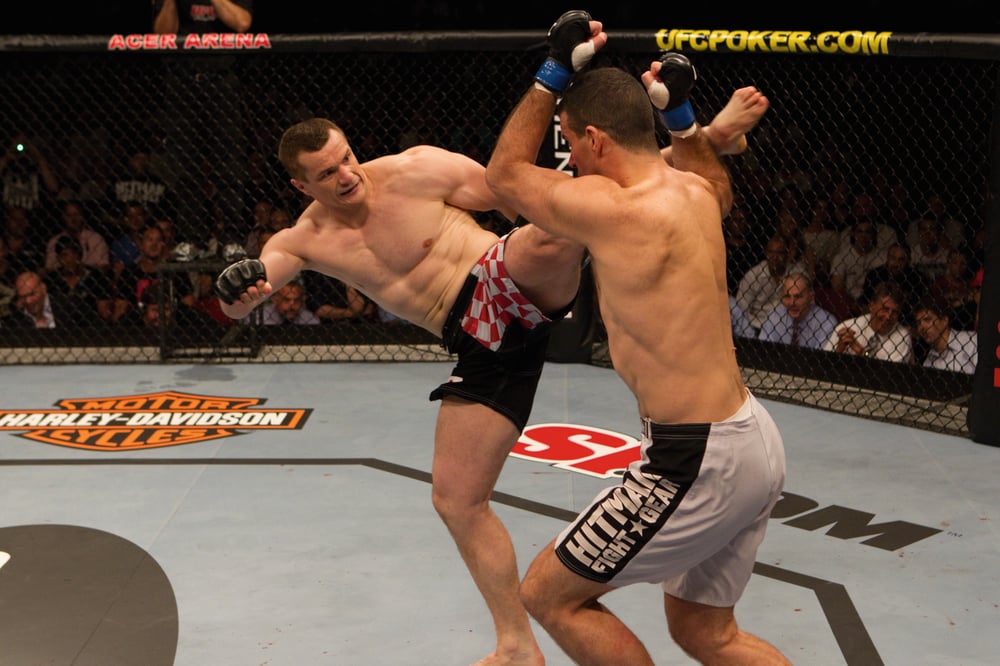
Kickboxing
Kickboxing refers to the ‘Western’ style, with less emphasis on elbows and repeated knee strikes. Think K-1 contests.
By utilizing effective footwork to move in and out of their opponents’ range of motion, Alistair Overeem and Mirko ‘Cro Cop’ Filipovic are among kickboxing’s most successful MMA fighters. By changing their stance and controlling the distance between them and their opponents, both fighters utilize power kicks to cripple foes.
Analysts claim some bouts have become displays of ‘bad kickboxing’, where fighters stand and trade to gain acclaim, despite lacking a kickboxing background. Excitement’s a cornerstone of MMA, but Strikeforce heavyweight champion and Pride veteran Alistair Overeem, one of MMA’s greatest kickboxing exponents, frowns upon amateurish striking.
“Sometime I hear commentators saying, ‘This guy is a kickboxing fighter,’ and when I watch the fight I’m surprised because the technical level he shows is pretty weak. Coming from Holland we are pretty spoiled, kids fight at an early age in kickboxing here. If a fighter in Holland is a B-level fighter he would be considered a ‘kickboxer’ in an MMA fight.”
Of late, Overeem and his stablemates at Holland’s Golden Glory academy have utilized powerful lower body strikes developed from kickboxing to great effect. Mirko ‘Cro Cop’ Filipovic on the other hand put on an elaborate display of unorthodox leg strikes against Pat Barry at UFC 116 in July 2010. The barnstorming lower-weight clashes in the WEC can hardly be dubbed ‘bad kickboxing’ either, and applied with intelligence the approach could be due for a revival.
Success - 8
Influence - 8
Entertainment value - 8
Virtuosos: Alistair Overeem, Mirko ‘Cro Cop’
Boxing
How we all roared with laughter at superstar boxer James Toney’s MMA debut in August. But boxing’s always been intrinsic to mixed martial arts, since the late Bruce Lee declared it the basis for modern combat sports and married the Western ‘full body’ striking technique with Eastern moves. Even now MMA’s top dogs relish the chance to train with boxing gurus such as Freddie Roach.
Moreover, right now fighters such as Frank Edgar and Junior Dos Santos are adapting boxing techniques – head movement and footwork in particular – for MMA use with startling effect. Indeed, in 2010 several elite fighters have secured difficult wins using nimble defense-minded striking – Jose Aldo over Urijah Faber, and Jacare Souza over Tim Kennedy.
One of the few professional boxers to make a transition to MMA, Marcus Davis, speaks about boxing’s strengths: “It teaches you to have great timing, good footwork and other essentials like proper punching, head movement and how to parry punches. Just based on stand-up, boxing hands are superior to any other martial art. And boxing defense is better too – at least against punches.”
MMA’s former boxers are routinely criticized for lacking the technical efficiency that their counterparts in professional boxing display. ‘The Irish Hand Grenade’ doesn’t share that opinion. “There’s a time and a place for any kind of punch. MMA striking isn’t wrong or worse, it’s just different. We don’t have big gloves on, so looping punches can knock the other guy out.”
Whereas pure boxing seemingly has little place in the cage, the adapted boxing style used by Edgar and Dos Santos could well be the next major trend in MMA.
Success - 7
Influence - 8
Entertainment value - 8
Virtuosos: Junior Dos Santos, BJ Penn, Quinton Jackson
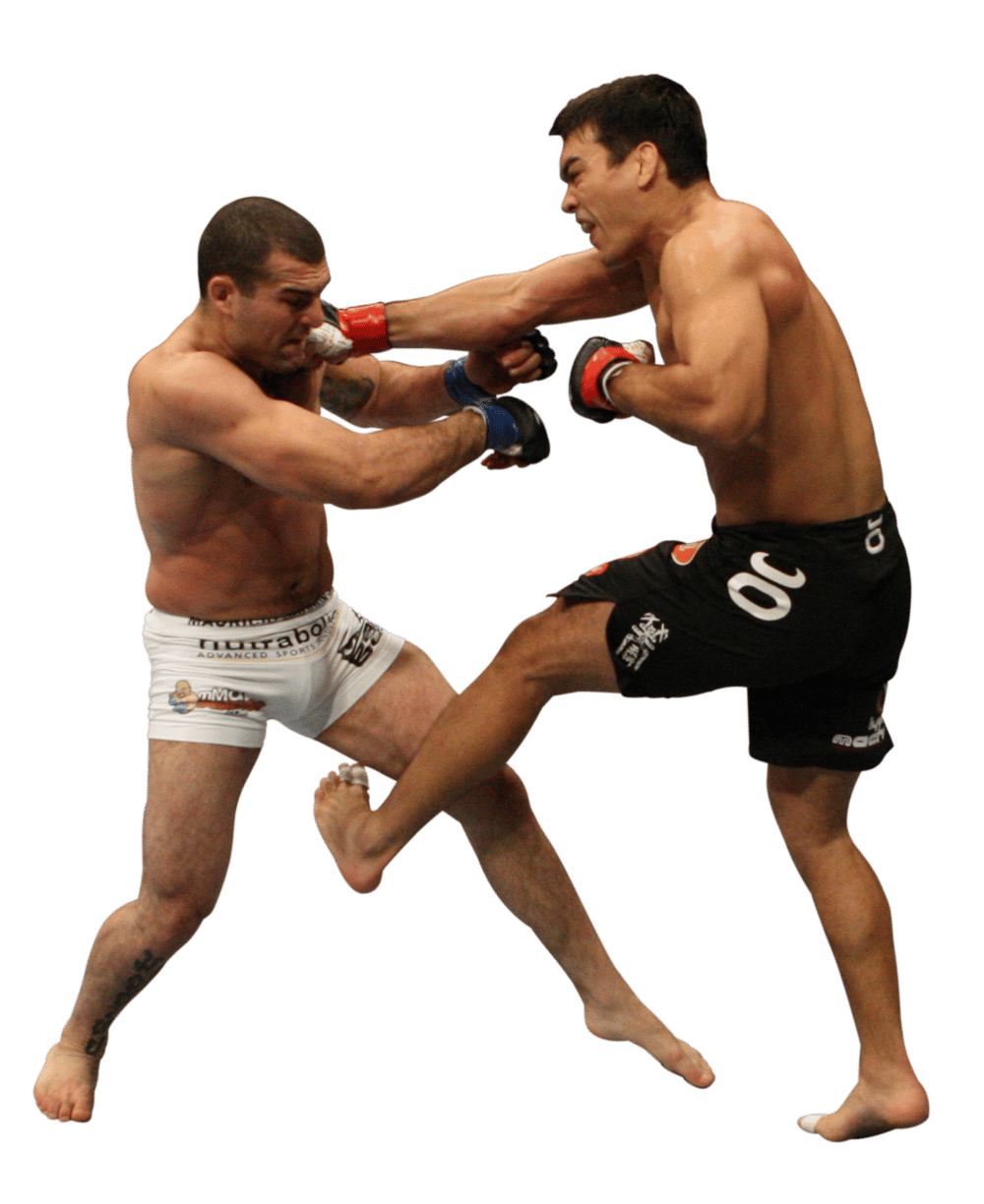
Unorthodox
The ‘complete’ style of modernist MMA, popularized by the likes of uber-trainer Greg Jackson, has a foil. Fighters with an exotic base do sometimes emerge from the international circuit – and they tend to be highly effective.
The unorthodox striking in Lyoto Machida’s karate, adapted for MMA from the shotokan school, centers on timing and distance. Machida’s unusual stance means he throws punches and kicks from angles that’re tough to counter. He successfully evades his opponent’s strikes by removing himself from their range using karate-based sabaki footwork, which allows ‘The Dragon’ to move with less effort and greater speed. Complimented by his unusual stance, this provides the elusiveness that Machida’s famed for.
Fedor Emelianenko specializes in sambo, a Russian combat sport incorporating grappling and striking. Stephen Koepfer, US coach at the 2008 FIAS World Sambo Championships, identifies what makes it effective: “Sambo has unique tools in terms of technique, but the more important factor is how training is geared towards smoothing out transitions between ranges. Sambo fighters have a much different movement style than other grapplers. Some consider it more aggressive. I think it is simply faster paced.” Choke holds are banned in sambo though, which may explain why Emelianenko fell (twice) into Fabricio Werdum’s triangle during their short bout in June 2010. Telling Russian newspaper Gazeta.Ru that “Sambo is great. Jiu-jitsu is nothing special,” was a rare moment of hubris for ‘The Russian Experiment’. Dave Camarillo says: “I don’t agree that you can be prepared for high-level subs if you don’t know jiu-jitsu. Fedor went the wrong direction in the triangle. I was in the stands, and said, ‘This is bad,’ when he shot the first triangle. When he shot the second, I knew it was over well before he tapped. Very simple white to blue-belt basics would have saved him.”
In commentator-speak unorthodox opponents are “impossible to prepare for.” But it seems that exotic fighters would benefit from a healthier respect for the mainstream. Though fans won’t let that stop them tuning in to the likes of Anthony Pettis, Shinya Aoki, Miguel Torres and MMA’s other colorful young superstars.
Success - 9
Influence - 2
Entertainment value - 9
Virtuosos: Lyoto Machida, Fedor Emelianenko, Cung Le
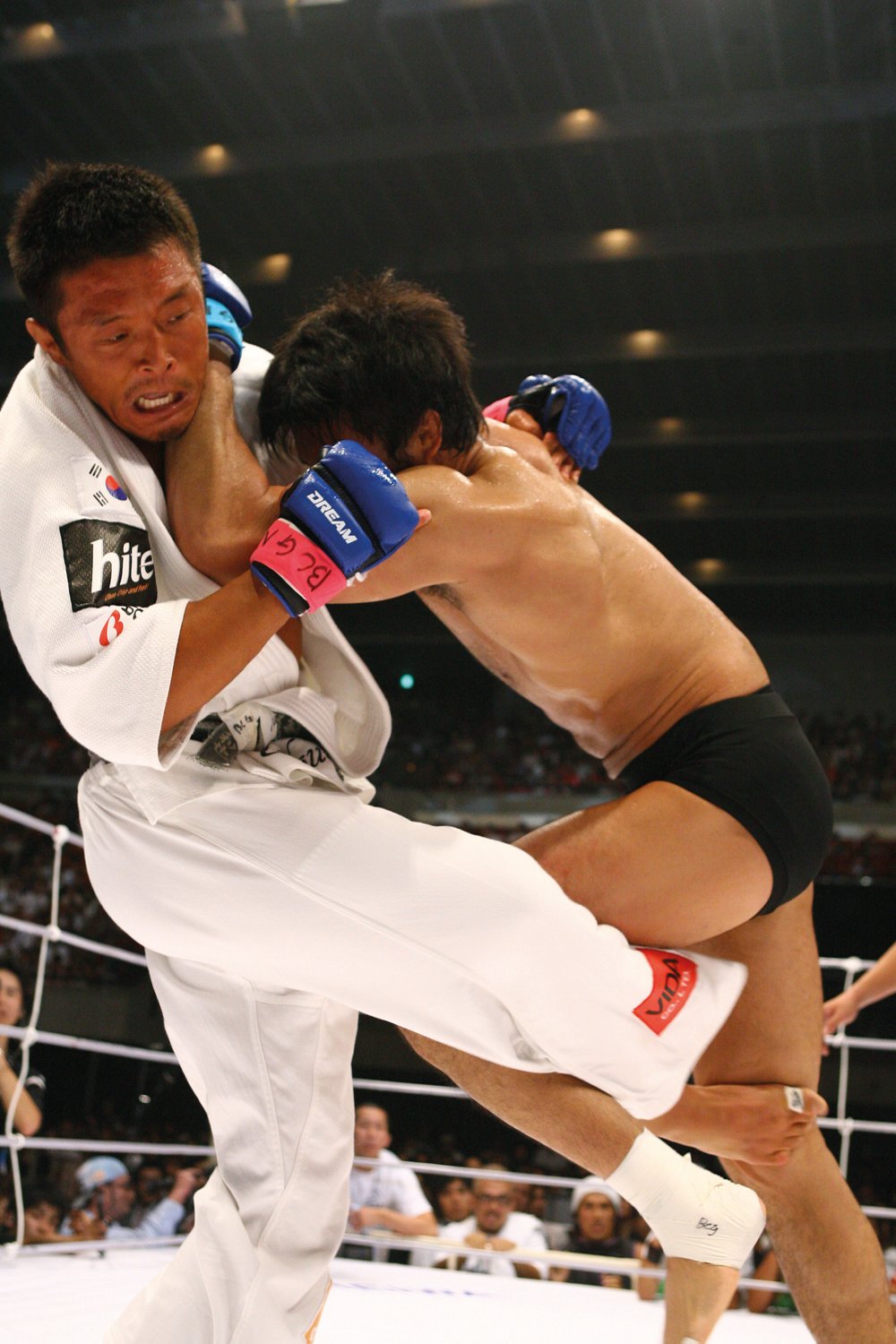
Judo
It’s a relatively modern martial art (invented in 1882 by Japanese polymath Jigoro Kano) and a forebear of BJJ. But judo’s rarely employed in MMA – nonetheless, the argument’s building that it should be. Returning UFC fighter and noted judoka Karo Parisyan:
“More people don’t use judo because they don’t think it’s effective enough. Even some of the best judokas don’t think it can work in MMA. But I see your body the same as a gi; as a material I can throw on the ground. I use the opponent’s momentum, speed and aggression against him to throw him like a baby.”
Before minor mental health issues impeded his UFC career, Parisyan was noted for his ability to combat stifling wrestling techniques with impressive judo throws. Asian superstar Yoshihiro ‘Sexyama’ Akiyama also incorporates judo into his close game to often spectacular effect. Judo’s solid base, emphasis on balance and use of an opponent’s strength against him could be the ‘missing link’ in the ongoing quest to combat wrestling. British stand-out ‘Judo’ Jimmy Wallhead says: “It isn’t used on a wide scale because it needs to be adapted for MMA. The simplest example is that I never attempt a judo throw in MMA without an underhook. To improve judo’s prominence, there needs to be a recognized connection between the discipline and MMA from the start of training.”
Success - 5
Influence - 5
Entertainment value - 7
Virtuosos: Yoshihiro Akiyama, Jimmy Wallhead, Karo Parysian
Over to the official decision...
Wrestling would easily take home the belt if it wasn’t for viewers literally switching off in droves when faced by Division 1’s finest. Muay Thai’s watchability and influence sees it fend off all-comers with BJJ a close second and boxing third. Judo falls into last place, but like every dog could well have its day – the wrestler’s bane, Karo Parisyan is back in the UFC after all...
Final scores:
Muay Thai - 26
BJJ - 24
Kickboxing - 24
Boxing - 23
Wrestling - 21
Unorthodox - 20
Judo - 17
HOW CAN WRESTLERS FINISH MORE FIGHTS?
It’s ‘lay ‘n’ pray – no way!’ with our game-changing guide
Junior Dos Santos recently commented on Facebook: “The Americans are good on what they do. [They] have great wrestling technique and they take you down and stay there forever, getting their points and winning their fights. It’s a boring fight, but it’s an efficient game they have.” Given that wrestling is the most successful but least exciting discipline, what more can wrestlers do to avoid judges and add entertainment?
Take more risks
Marcus Davis says: “They gotta do what they gotta do; I gotta do what I gotta do. If you see me fight, someone is going to bleed and I might get KO’d or the other guy might get KO’d. That’s why people come to watch me fight.” For wrestlers to match Davis for thrills, the solution is simple: rather than focus on winning by any means, take more risks to try and finish the fight.
Use wrestling for defense, not offense
Wrestlers could adopt the sprawl ‘n’ brawl tactics, adapted from a Graeco-Roman base by former collegiate wrestling star Chuck Liddell, in order to keep the fight standing. Kenny Florian says that “the best defense against wrestling is wrestling.”
The mankini posse should excel in keeping it on the feet, as their takedown defense is so advanced.
Wrestlers who are uncomfortable standing however could apply their discipline’s work ethic to excelling in BJJ, like Jake Shields.
Many wrestlers are simply content to avoid being submitted, rather than seeking submissions themselves. Dave Camarillo said: “Wrestling and BJJ are a bow and arrow – you should never have one without the other. Good wrestlers take people down but don’t understand submissions or advancing position.”
Be busier
As perfected by Chael Sonnen. While he doesn’t land the most punishing blows, his relentless style keeps fans interested. Ryan Bader says: “It’s an entertainment business but you also have to win. You’ve got to be smart, but also realize people come to watch you fight. You’ve got to stay active, both on the ground and on your feet.”
Thanks to Ryan Bader, Dave Camarillo, Marcus Davis, Kenny Florian, Josh Koscheck, Demian Maia, Alistair Overeem and Jimmy Wallhead for their exclusive input.










